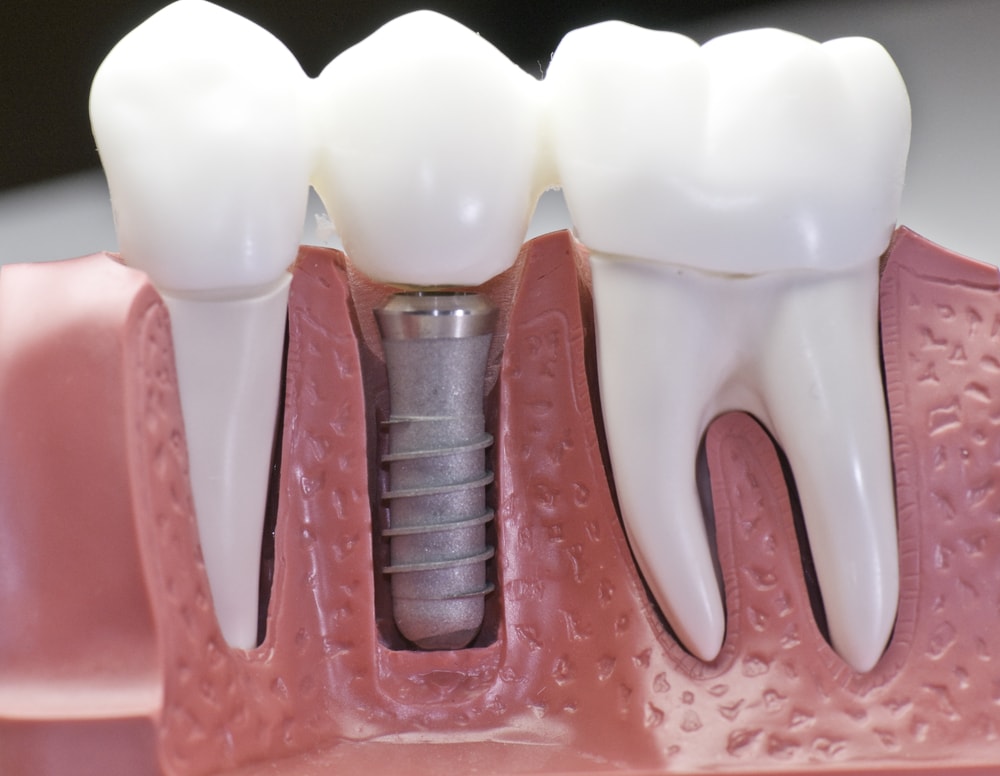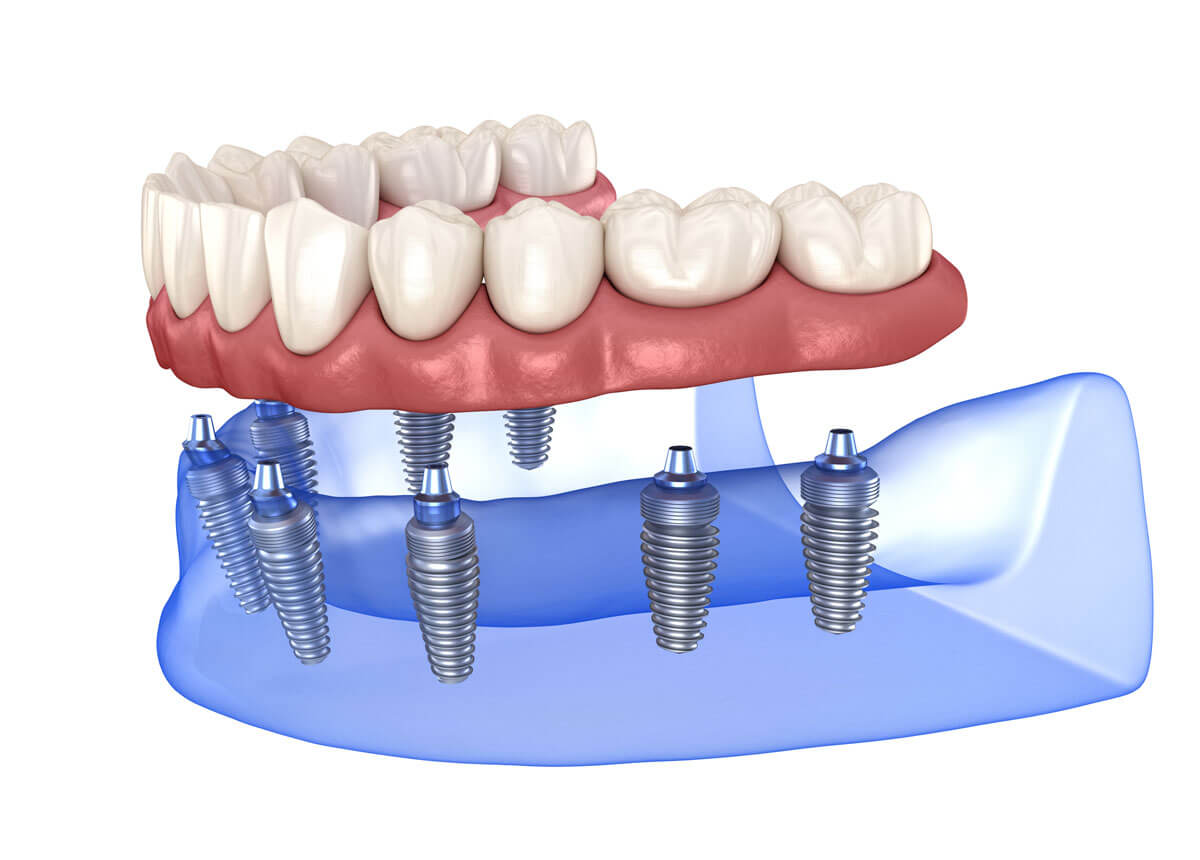Our Dental Sense Ideas
Our Dental Sense Ideas
Blog Article
The Ultimate Guide To Dental Sense
Table of ContentsSome Known Incorrect Statements About Dental Sense Rumored Buzz on Dental SenseGetting The Dental Sense To WorkThe Definitive Guide to Dental Sense
are clinical tools operatively dental implanted into the jaw to bring back a person's ability to eat or their look. They supply support for artificial (phony) teeth, such as crowns, bridges, or dentures. When a tooth is shed because of injury or condition, a person can experience problems such as fast bone loss, malfunctioning speech, or adjustments to eating patterns that lead to discomfort.Dental implant systems are composed of a dental implant body and oral implant abutment and may likewise include an abutment fixation screw. Professional teeth whitening. The dental implant body is operatively placed in the jawbone instead of the tooth's origin. The oral implant abutment is usually affixed to the implant body by the abutment fixation screw and prolongs through gum tissues into the mouth to sustain the connected fabricated teeth
(https://www.callupcontact.com/b/businessprofile/Dental_Sense/9469240)Structure of The Oral Implant System choosing oral implants, speak to your oral provider regarding the prospective advantages and risks, and whether you are a candidate for the procedure. Points to consider: Your general health and wellness is a crucial consider identifying whether you are a good candidate for dental implants, exactly how long it will require to recover, and for how long the implant may remain in place.
Smoking cigarettes may impact the recovery process and lower the long-term success of the implant. The recovery procedure for the implant body may take a number of months or longer, throughout which time you normally have a temporary abutment instead of the tooth. the dental implant treatment: Very carefully follow the oral hygiene guidelines provided to you by your oral service provider.
Dental Sense Fundamentals Explained
Implant failing can cause the need for another surgical procedure to take care of or replace the implant system. Recovers the capability to eat Brings back aesthetic appearance Helps keep the jawbone from diminishing because of bone loss Protects the health of the surrounding bone and gum tissues Aids maintain surrounding (close-by) teeth stable Boosts lifestyle Damages to surrounding all-natural teeth during dental implant positioning Injury to the surrounding tissues throughout surgery, such as sinus perforation Injury during surgical procedure (for instance, crack of bordering jawbone) Inadequate feature, such as feeling like the teeth do not bite with each other usually A sensation that the tooth is loose or turning in position arising from an abutment screw loosening Implant body failure (looseness of the dental implant body) because of systemic infection, which might be a lot more most likely in patients with unrestrained diabetics issues as a result of regional infection in bone and gums supporting the dental implant body because of postponed recovery, which may be extra likely in individuals who smoke Difficulty cleaning up the gum tissues around the implant, leading to poor dental hygiene Neglected gum disease Post-surgical feeling numb because of nerve impingement or damages Constantly inform health and wellness care service providers and imaging professionals that you have dental implants prior to any magnetic resonance imaging (MRI) or x-ray treatments.
FDA is not knowledgeable about any damaging occasions reported for MRI or x-ray procedures with oral implants. Dental implants systems are usually constructed from materials that follow worldwide consensus criteria of the International Company for Standardization (ISO) or ASTM International. These standards have details of what makes a risk-free material.

An oral implant is a framework that replaces a missing out on tooth. With screw-like gadgets, the doctor inserts a dental implant right into the jawbone, and it acts as an anchor for an artificial tooth, called a crown.
The 7-Minute Rule for Dental Sense
Some people are not eligible for dental implant surgery. It is for oral cosmetic see post surgeons to operate people with: acute illnessuncontrollable metabolic diseasebone or soft tissue condition or infectionIf these problems are fixed, a person can have the surgical treatment. In, dental doctors avoid from operating individuals with: If people with any of the above undergo dental implant surgical treatment, there is a higher risk of the dental implant falling short.

Dental dental implant surgical procedure is an individualized process. It's not the same for every person. But the adhering to offers a general review of what you can expect your dental professional, oral doctor, periodontist or prosthodontist to do: Put the dental implant operatively. Give you time to recover. Attach the article and last crown, bridge or denture.
Next, your specialist will carefully position the dental implant into your jaw. Finally, your cosmetic surgeon will certainly rearrange your periodontals and close the cut with stitches. If your dental implant is near the front of your mouth, your dental practitioner will make a momentary tooth for you to put on until you heal. In this way, you won't have a gap in your smile while you recoup.
Little Known Facts About Dental Sense.
Throughout the recovery stage, your jawbone needs to fuse to the oral implant. This process can take anywhere from 3 to 9 months.
When your implant heals, your dentist can connect the abutment (small port article) and your last restoration (crown, bridge or denture). This normally takes regarding one hour to complete and may need a second small surgical procedure. You shouldn't really feel any discomfort throughout your oral implant procedure due to the fact that your company will use medication to numb your gums.
Report this page